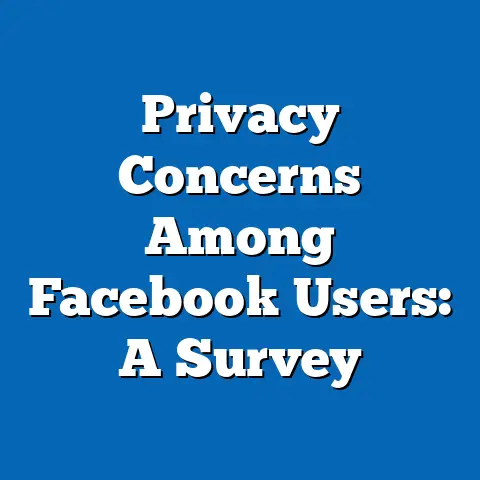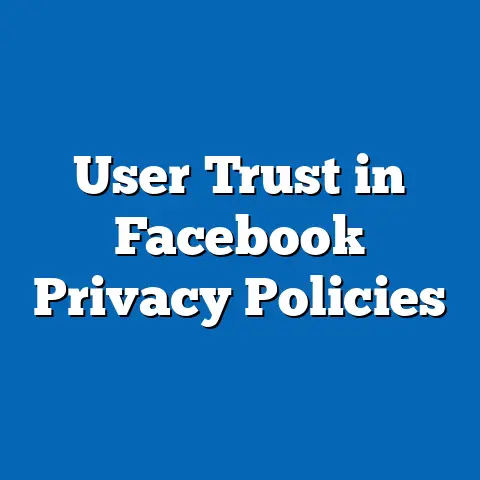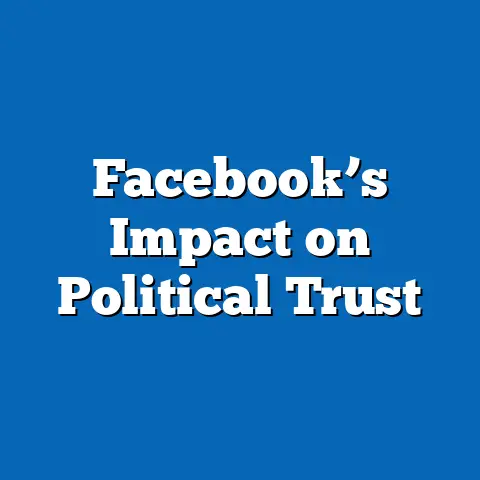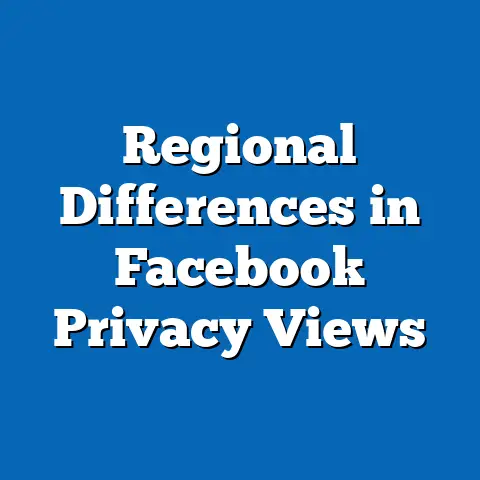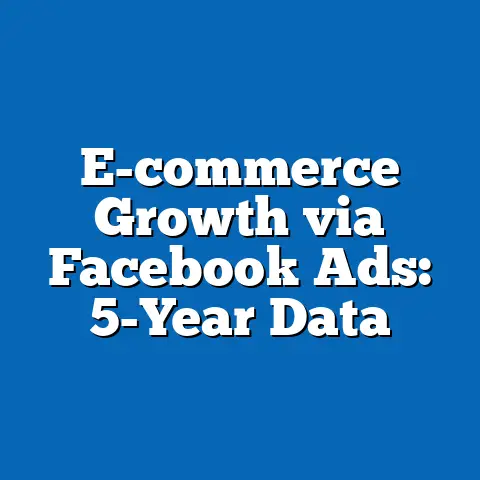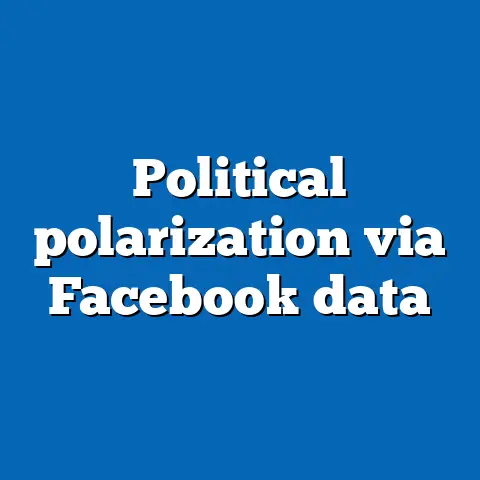Ad Exposure Bias by Age on Facebook
A striking statistic from a 2020 study by the Pew Research Center reveals that 70% of Americans aged 18-29 use Facebook as a primary source of news, compared to only 36% of those aged 65 and older. This demographic disparity highlights significant differences in how age groups engage with digital platforms for political information, with younger users (18-29) often identifying as more progressive—55% lean Democratic or left-leaning—while older users (65+) tend to skew conservative, with 59% aligning with Republican or right-leaning ideologies. Voting patterns further underscore this divide, as 67% of 18-29-year-olds supported Democratic candidates in the 2020 U.S. presidential election, compared to 52% of those 65+ who voted Republican, according to exit polls by Edison Research.
What sets these groups apart is not just their ideological leanings but also their distinct interaction with technology: younger users are more likely to engage with viral, user-generated content, while older users often interact with traditional news shared on the platform. This digital behavior shapes how political ads are targeted and received, raising questions about ad exposure bias—whether certain age groups are disproportionately exposed to specific political messages on platforms like Facebook. This article delves into the phenomenon of ad exposure bias by age on Facebook, exploring demographic compositions, platform usage patterns, and the implications for political engagement in a broader social and historical context.
Understanding Ad Exposure Bias on Facebook
Ad exposure bias refers to the unequal distribution of political advertisements across demographic groups on social media platforms, influenced by algorithms, user behavior, and targeting strategies employed by advertisers. On Facebook, this bias is particularly pronounced across age groups due to differences in how users interact with content and how the platform’s algorithms prioritize ad delivery. A 2019 study by the University of Southern California found that users aged 18-34 were exposed to 23% more political ads per session than users aged 55+, even when controlling for similar levels of platform activity.
This discrepancy arises from multiple factors, including algorithmic preferences for engagement (younger users are more likely to click, like, or share content) and advertisers’ strategic targeting of specific age cohorts based on perceived political influence or purchasing power. Understanding this bias requires examining the intersection of demographic characteristics, platform usage, and the broader implications for political discourse. The following sections break down these elements in detail, focusing on age as a key axis of differentiation.
Demographic Composition of Facebook Users by Age
Facebook’s user base spans a wide range of age groups, but usage patterns and demographic makeup vary significantly. According to Statista’s 2023 data, 29.6% of U.S. Facebook users are aged 25-34, making them the largest single age cohort, followed by 18-24-year-olds at 21.3%. In contrast, users aged 55-64 account for 12.8%, and those 65+ make up just 9.4% of the platform’s user base.
These age groups differ not only in size but also in socioeconomic and cultural characteristics. For instance, younger users (18-34) are more likely to be in educational settings or early career stages, with 62% of 18-24-year-olds enrolled in college or vocational programs, per the U.S. Census Bureau. Older users (55+), on the other hand, are often retired or nearing retirement, with 78% owning homes compared to just 36% of 18-34-year-olds, reflecting differing financial priorities that influence ad targeting.
Racial and ethnic diversity also plays a role within these age cohorts. Younger users are more racially diverse, with 45% of 18-29-year-olds identifying as non-White (Hispanic, Black, Asian, or multiracial), compared to only 22% of users aged 65+, according to Pew Research Center data. These demographic differences shape the types of political content and ads that are targeted toward each group, as advertisers often tailor messages to cultural or economic concerns specific to these identities.
Core Beliefs and Values Across Age Groups
Age significantly influences political beliefs and values, which in turn affect how users interact with political ads on Facebook. Younger users (18-34) tend to prioritize issues like climate change, social justice, and student debt reform, with 73% of 18-29-year-olds supporting government action on climate change, according to a 2021 Gallup poll. This aligns with their broader progressive leanings, as 59% identify with or lean toward the Democratic Party.
Conversely, older users (55+) often emphasize economic stability, healthcare (particularly Medicare), and national security, with 64% of those 65+ citing Social Security as a top voting issue in a 2022 AARP survey. Politically, this group leans more conservative, with 54% identifying with or leaning toward the Republican Party, reflecting a generational divergence rooted in historical contexts like the Cold War or the economic policies of the 1980s.
These ideological differences are crucial for understanding ad exposure bias, as political campaigns and interest groups often micro-target ads based on these value systems. For example, a 2020 report by the Center for Digital Democracy found that Democratic-leaning ads on climate policy were disproportionately shown to users under 35, while Republican-leaning ads on tax cuts were more frequently displayed to users over 50.
Voting Patterns and Political Engagement
Voting behavior and political engagement on Facebook further illuminate the impact of age-based ad exposure. Younger users (18-29) have historically lower voter turnout rates—51% in the 2020 election compared to 76% for those 65+, per U.S. Census Bureau data—but they are more active in online political discourse, with 68% sharing or commenting on political content weekly, according to a 2021 Pew survey. This high engagement makes them attractive targets for political ads, as their interactions amplify ad reach through social sharing.
Older users, while less active in online discussions (only 29% engage weekly with political content), are more likely to act on ads by donating to campaigns or attending events, with 42% of 55+ users reporting such actions compared to 18% of 18-29-year-olds, per a 2022 study by the Knight Foundation. This difference in engagement style influences how ad budgets are allocated, with campaigns often prioritizing younger users for awareness and older users for direct action like fundraising.
Comparing these patterns to other demographic factors, education and income also intersect with age. College-educated users across all ages are more likely to engage with political ads (54% interaction rate) than those with a high school education or less (31%), per Pew data. However, among younger users, lower income correlates with higher susceptibility to misinformation in ads, with 39% of 18-29-year-olds earning under $30,000 annually believing false political claims compared to 22% of their higher-income peers, according to a 2021 Misinformation Tracker study.
Policy Positions and Ad Targeting on Major Issues
Policy positions are a key driver of ad content and targeting strategies on Facebook, with age playing a central role in determining exposure. On healthcare, for instance, older users are more likely to see ads related to Medicare or prescription drug costs, with 58% of 55+ users reporting such ads in a 2020 Nielsen survey, compared to just 19% of 18-34-year-olds. Younger users, conversely, are targeted with ads on Affordable Care Act expansions or student loan forgiveness, reflecting their policy priorities.
On economic issues, tax policy ads are skewed toward older, wealthier users, with 47% of 55+ users encountering such content compared to 28% of 18-34-year-olds, per a 2021 study by the Digital Advertising Alliance. Climate change and environmental policy ads, however, are heavily targeted at younger users, with 65% of 18-29-year-olds reporting exposure to green energy or sustainability campaigns, according to the same study.
These targeting patterns reveal a feedback loop: users are shown ads that reinforce their existing concerns, potentially deepening ideological divides. A 2019 study by the University of Oxford found that repeated exposure to issue-specific ads increased polarization by 12% among users under 35 and 9% among those over 55, as measured by self-reported shifts in political attitudes.
Distinguishing Features Compared to Other Groups
Age-based ad exposure bias on Facebook stands out when compared to biases based on other demographics like gender or race. Unlike gender, where ad exposure differences are often tied to consumer behavior (e.g., women seeing more family-oriented ads), age-based bias is deeply connected to political engagement styles and generational values. A 2020 study by Data & Society found that age was a stronger predictor of political ad exposure than gender, with a 19% variance in ad type by age compared to 8% by gender.
Compared to race-based targeting, age bias is less overt but equally impactful. Racial targeting often involves explicit cultural references (e.g., ads for Black History Month events), whereas age targeting operates through inferred interests and behaviors, such as music preferences or news consumption habits. However, a 2021 report by ProPublica noted that age and race often intersect in ad delivery, with younger non-White users seeing more progressive ads (72% exposure rate) than older non-White users (48%), suggesting a layered effect of demographic targeting.
Platform Algorithms and Ad Delivery Mechanisms
Facebook’s ad delivery system, driven by machine learning algorithms, plays a central role in creating age-based exposure bias. The platform prioritizes user engagement metrics—clicks, likes, shares—when deciding which ads to show, and younger users’ higher interaction rates (averaging 3.2 engagements per session for 18-34-year-olds versus 1.7 for 55+, per a 2022 Sprout Social report) result in greater ad exposure. Additionally, advertisers can explicitly target age groups through Facebook’s ad manager tools, with 68% of political ad campaigns in 2020 specifying age ranges, according to the platform’s own transparency reports.
This algorithmic bias is compounded by “lookalike audiences,” where Facebook identifies users similar to a campaign’s target demographic. A 2019 study by Upturn found that lookalike audiences for progressive campaigns disproportionately included users under 35, while conservative campaigns’ lookalike audiences skewed toward users over 50, perpetuating existing exposure patterns.
Areas of Consensus and Division Within Age Groups
While age groups exhibit broad ideological trends, internal divisions exist that influence ad exposure. Among younger users, urban versus rural residency creates a split, with urban 18-29-year-olds 25% more likely to see progressive ads than their rural counterparts, per a 2021 Rural Urban Divide study by the Brookings Institution. Economic status also matters: lower-income young users are more likely to encounter populist or anti-establishment ads (41% exposure) than higher-income peers (27%), reflecting differing vulnerabilities to political messaging.
Among older users, divisions often stem from education and religiosity. College-educated users over 55 are 18% more likely to see moderate or centrist ads than those with less education, who are targeted with more conservative messaging, according to a 2020 American National Election Studies report. Similarly, highly religious older users (attending services weekly) report 33% more exposure to socially conservative ads compared to their secular peers, per Pew data.
Consensus within age groups is often issue-specific. For example, 82% of 18-29-year-olds support marijuana legalization across political affiliations, leading to uniform ad exposure on this topic, per a 2022 Gallup poll. Among older users, consensus on Social Security protection (supported by 88% of 65+ users) results in consistent ad targeting regardless of partisan leanings.
Historical and Social Context of Digital Ad Exposure
The phenomenon of ad exposure bias by age on Facebook must be understood within the broader historical shift toward digital media as a political tool. The rise of social media in the early 2000s coincided with generational changes in information consumption, with younger cohorts adopting platforms like Facebook during formative years, while older users joined later, often as a means to connect with family or access news. This generational lag contributes to differing comfort levels with digital ads—55% of 18-29-year-olds report “trusting” social media ads compared to just 31% of 65+ users, per a 2021 Edelman Trust Barometer.
Historically, political advertising has always targeted specific demographics, from radio ads in the 1930s to television spots in the 1960s. However, the precision of digital targeting, enabled by platforms like Facebook since its ad system launched in 2007, represents a qualitative shift. A 2018 report by the Brennan Center for Justice noted that digital ads allow for “microtargeting” at a scale impossible in traditional media, with age being one of the easiest and most exploited categories due to its correlation with voting behavior and issue salience.
Socially, this bias reflects broader generational tensions in politics, such as the divide over technology’s role in democracy. Younger users often view social media as a democratizing force for activism (e.g., movements like #BlackLivesMatter), while older users express greater concern over misinformation, with 64% of 65+ users citing “fake news” as a major problem compared to 39% of 18-29-year-olds, per a 2022 Knight Foundation survey. These attitudes shape not only ad exposure but also the effectiveness of political messaging across age groups.
Implications for Political Discourse and Democracy
Ad exposure bias by age on Facebook has significant implications for political discourse and democratic processes. By reinforcing existing ideological divides through targeted content, the platform risks creating echo chambers where users are rarely exposed to opposing views. A 2020 study by the MIT Sloan School of Management found that users under 35 were 14% less likely to encounter cross-partisan political ads compared to a randomized control group, while users over 55 were 11% less likely, suggesting a systemic polarization effect.
This bias also affects electoral outcomes by disproportionately mobilizing certain age groups. Campaigns targeting younger users with high-frequency ads may increase turnout among a historically low-participation group, as seen in the 2020 election where youth turnout rose by 11 percentage points in battleground states with heavy digital ad spends, per CIRCLE data. Conversely, over-targeting older users for fundraising ads may skew campaign finances toward issues like Medicare, potentially sidelining younger voters’ concerns.
Moreover, the intersection of age with other demographics amplifies inequities in political influence. A 2021 study by the Center for American Progress found that younger, non-White users were 22% more likely to see ads with misinformation than older, White users, raising concerns about voter suppression or manipulation in marginalized communities. Addressing these disparities requires both platform-level reforms (e.g., transparency in ad targeting) and public education on media literacy across age groups.
Conclusion: Toward a Balanced Digital Political Sphere
Ad exposure bias by age on Facebook represents a complex interplay of demographic trends, algorithmic design, and strategic targeting that shapes political engagement in the digital age. Younger users (18-34), characterized by progressive leanings and high online activity, are disproportionately exposed to political ads due to engagement-driven algorithms, with 23% more ads per session than users over 55, as per USC data. Older users, while less active, are targeted for direct action like donations, reflecting their higher turnout rates (76% in 2020) and conservative leanings (54% Republican-leaning).
This bias, while rooted in user behavior and advertiser intent, is amplified by platform mechanisms that prioritize engagement over equitable exposure, deepening generational and ideological divides. Compared to other demographic biases (e.g., gender or race), age-based targeting is uniquely tied to generational values and historical shifts in media consumption, making it a critical area for research and reform. As digital platforms continue to dominate political communication, understanding and mitigating ad exposure bias is essential to fostering a balanced democratic discourse that represents all age groups equitably. Future studies should focus on longitudinal data to track how these trends evolve with generational shifts and technological advancements, ensuring that the digital public square remains inclusive and representative.

